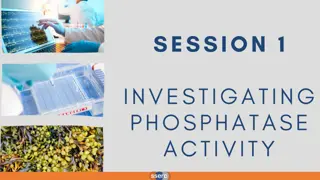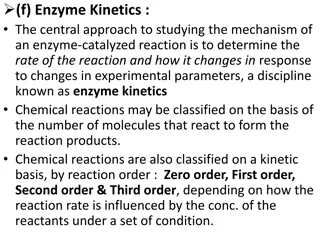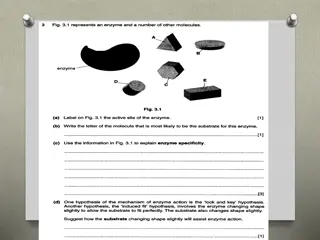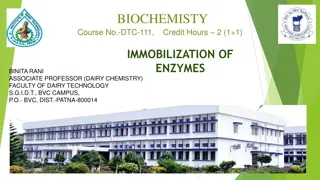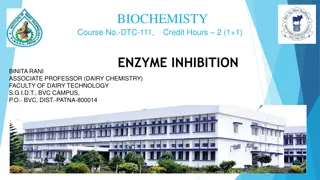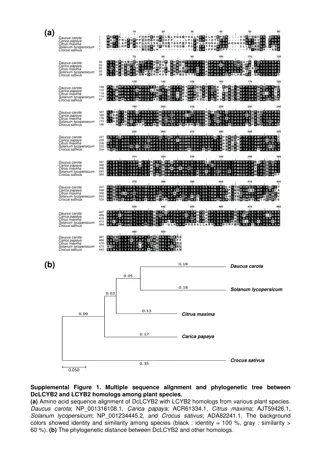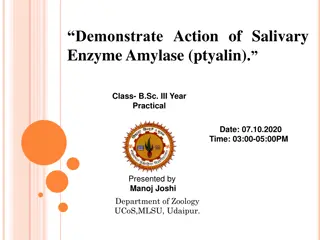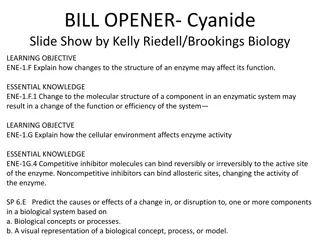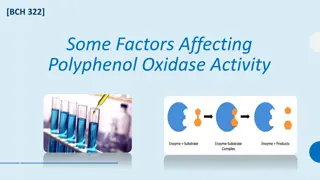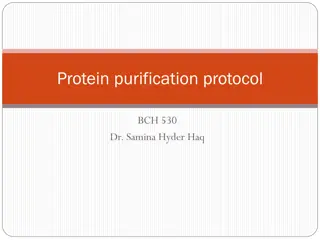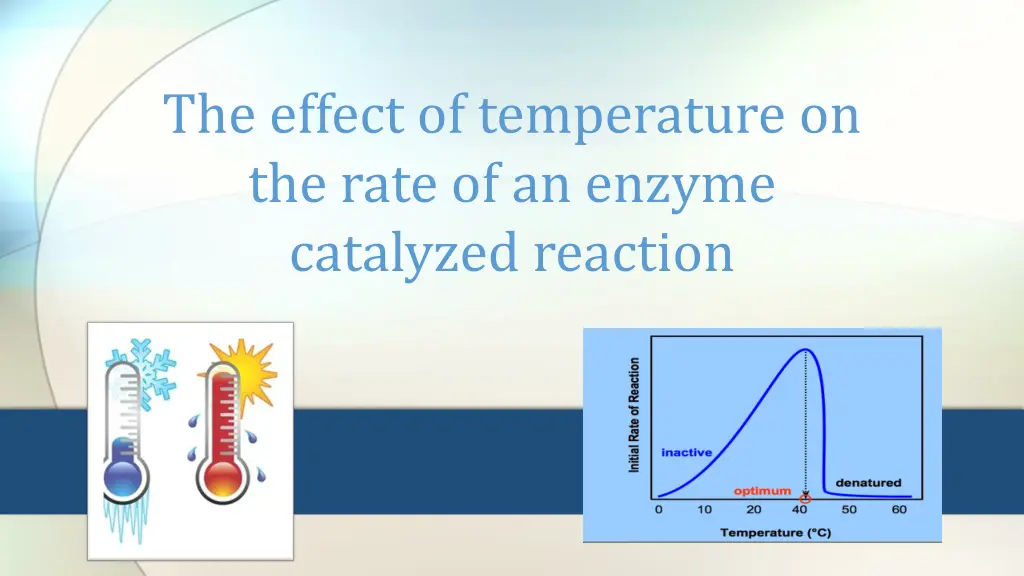
Effect of Temperature on Enzyme Activity
Explore how temperature influences the rate of enzyme-catalyzed reactions. Learn about optimum temperature, the impact of temperature on enzyme activity, and the consequences of extreme temperatures on enzyme function.
Download Presentation

Please find below an Image/Link to download the presentation.
The content on the website is provided AS IS for your information and personal use only. It may not be sold, licensed, or shared on other websites without obtaining consent from the author. If you encounter any issues during the download, it is possible that the publisher has removed the file from their server.
You are allowed to download the files provided on this website for personal or commercial use, subject to the condition that they are used lawfully. All files are the property of their respective owners.
The content on the website is provided AS IS for your information and personal use only. It may not be sold, licensed, or shared on other websites without obtaining consent from the author.
E N D
Presentation Transcript
The effect of temperature on the rate of an enzyme catalyzed reaction
In this experiment, we will continue to study acid phosphatase kinetics. Acid phosphatase kinetics Enzyme concentration Effect of temperature Substrate concentration Effect of inhibitor Time Effect of pH
Objectives To establish the relationship between temperature and the rate of an enzyme catalyzed reaction To determine the optimum temperature for such a reaction
The effect of Temperature on Enzyme The rate of an enzyme catalyzed reaction is affected by changes in temperature Each enzyme has a temperature that it works optimally in called (Optimum Temperature) For most enzymes, the optimum temperature is at or above the temperature of the cells in which the enzyme is found in vivo.
Optimum Temperature Each enzyme has a temperature that it works optimally in, which in humans is around 37 degrees Celsius the normal body temperature for humans. However, some enzymes work really well at lower temperatures like 4 degrees Celsius and some work really well in higher temperatures like 95 degrees Celsius.
What is the effect of temperature on the activity of most enzymes? The rate of an enzyme catalyzed reaction increase with temperature maximum called optimum temperature up to 1-At suboptimal temperature, increasing temperature increase the kinetics energy of the reactant. As they move faster, they move likely to collide and interact with each other and the enzyme. 2-The rate continues to rise until reaches a peak at the optimum temperature 1 2 3
What is the effect of temperature on the activity of most enzymes? 3-Above this temperature, the rate usually falls dramatically. This is because the increase energy cause bonds that maintain the enzymes shape to break, and the enzyme becomes denatured.(three dimensional structure will change) The changed shape means that the substrate can no longer fit into the active site, and enzyme activity is lost. 1 2 3
Method: You will perform a series of 5-minutes assays, in which different temperature will be used In order to detect the effect of temperature you must fix all the component except the temperature Time ( 5 minutes ) constant Enzyme concentration constant Temperature Variable pH (5.7) constant
Method: The effect of the following temperature will be studied on Acid phosphatase: Desired Method of preparation temperature ( C) 4 C Ice plus tap water in an ice bucket 20 C Thermos tatted water bath 37 C Thermos tatted water bath 60 C Thermos tatted water bath 80 C Thermos tatted water bath 100 C Thermos tatted water bath
Method Label 12 assay tubes as the following: Each should have its own Blank Blank-4Co Test-4 Co Blank-20 Co Test-20 Co Blank -37 Co Test-37 Co Blank-60 Co Test-60 Co Blank-80 Co Test-80 Co Blank-100 Co Test-100 Co
Method You must prepare the following for each tube: Chemical Volume 1.0M sodium acetate buffer (pH 5.7) 0.5 ml 0.1M MgCl2 0.5 ml p-nitrophenyl phosphate 0.5 ml Water 5 ml Place the tubes in the labeled temperature and let the temperature equilibrate for 2 min.
Method Add 0.5 ml of enzyme extract to TEST and allow the reaction to proceed for 5 min. Stop the reaction by the addition of 0.5ml of KOH . (for blank do not forget to add KOH before adding 0.5 ml of enzyme) Repeat steps using all the water bath temperatures described in the previous table. When all of the reaction mixtures have returned to room temperature, determine the absorbance at 405 nm of each experimental tube against its own blank.
Results : Temperature Absorbance 405 nm Velocity ( mole of PNP/min) 0 20 37 50 80 100 Plot a graph illustrating the effect of different temperatures on the rate of the reaction.
Calculations: Velocity (V) = (A x 106) /(E x time)= mole of PNP/min A= absorbance E= extension coefficient=18.8 x 103 Time = 5 min
The Effect of Temperature on the Rate of an Enzyme Catalyzed Reaction. ( mole of PNP/min) Optimum Temp Velocity Temperature ( C)
Discussion An introductory statement (In this experiment, we studied the effect of different temperatures on the rate of acid phosphatase catalyzed reaction.) Principle From the curve, explain and discuss the relationship between the activity of acid phosphatase and temperature. Define the optimum temperature and determine it from the curve.

